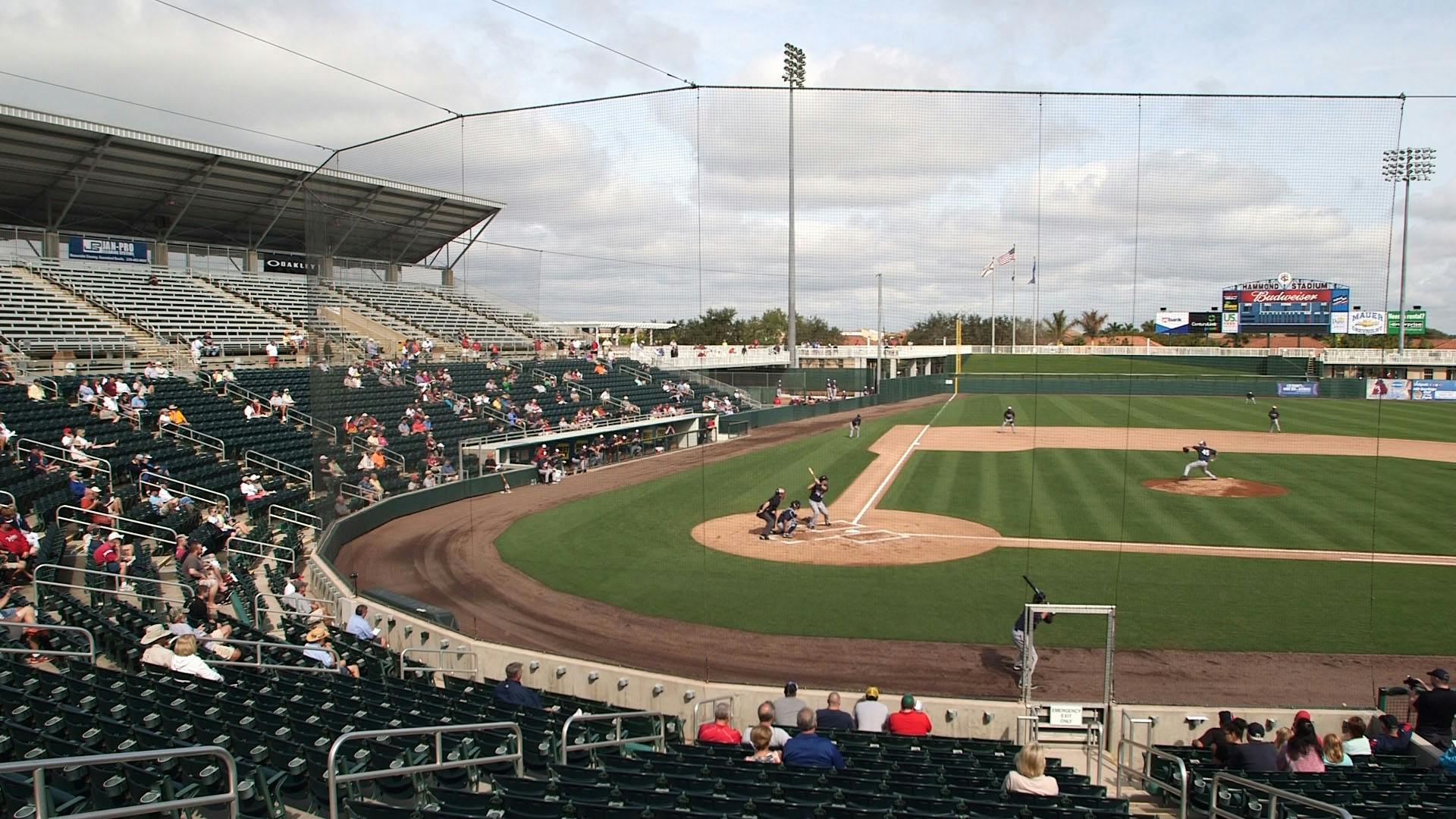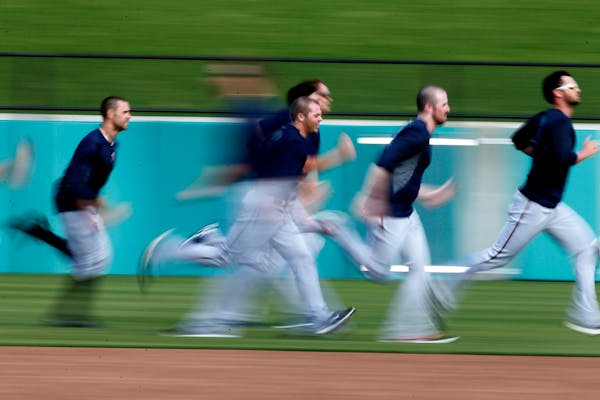FORT MYERS, Fla. – When he was at his best, Phil Hughes used a curveball to contrast his fastball.
When he limped through a 4-14 season last year, Hughes usually chose a slider as his second pitch.
Guess which one he's emphasizing this year.
"I threw a lot of sliders last year. I'm hoping to get away from that a little bit," said the new Twins righthander, signed to a three-year, $24 million contract in December. "I'm not even throwing it in the bullpen, and obviously not in games."
He proved it to his teammates Thursday, striking out four batters (including Byron Buxton and Miguel Sano) in two innings of the Twins' intrasquad tuneup for Friday's exhibition opener. Hughes threw 20 strikes among his 26 pitches, and estimated that "seven or eight" of them were curveballs.
"I feel like my curveball can be a better pitch than the slider was. So that's the idea," said Hughes, who also throws a cut fastball and a changeup. "I decided before I came to camp that I needed to get my curveball back to what it was. Not coming in here trying to reinvent myself or anything — I felt like I had a good foundation. I got away from it last year, obviously struggling with what I was doing. So I talked to [pitching coach Rick Anderson] a couple of times this winter about what I wanted to do, and getting my curveball back was a big thing. "
In 2009 and 2010, when Hughes went a combined 26-11 with a 3.81 ERA, he threw his curveball 17.9 percent of the time, and his slider only 1.6 percent, according to PitchFx statistics compiled by Fangraphs. But last season, the slider became his No. 2 pitch; Hughes threw it 23.3 percent of the time, while the curve declined to 9.0 percent.
The reason? A bulging disk in his back kept Hughes sidelined for part of spring training, and he didn't have time to refine his curve. "It's got the potential to be good. Last year it wasn't, so I kind of had to figure out something on the fly. [The short] camp … was not a recipe for good results," he said. "So now that I have the opportunity to have a full spring training, I feel like I can get that curveball back where it needs to be."
His slider, which he began throwing regularly late in 2012, wasn't awful, actually; it was his best swing-and-miss pitch (12.4 percent, according to Fangraphs) and his best outpitch on balls in play, though hitters still batted .296 off it.
But it was too similar to his fastball, Anderson said.
"We've seen him get in a pattern where he's going hard-hard," the pitching coach said. "If he gets [his curveball] going, and we're working on a changeup a little bit, the change of speeds makes him better. If he uses the other pitches to slow the ball down, it helps his [faster] stuff."
Hughes' mechanics make his curve harder to hit, too, manager Ron Gardenhire said. "Because he's got the deception of a quick arm, the short arm, it comes out of nowhere," Gardenhire said. "His ball's got great movement and he's got a nice little angle. The ball just jumps and explodes on you. But when he starts spinning it like that and gets you off balance, and he's able to throw that one over, too, it makes him pretty good."
The slider, which he rarely used before late 2012, isn't necessarily gone for good, Hughes said, but he and his pitching coach agree that he'll keep it on the shelf for now while focusing on his best three or four pitches. Better that, Anderson said, than "five pitches and master of none."

